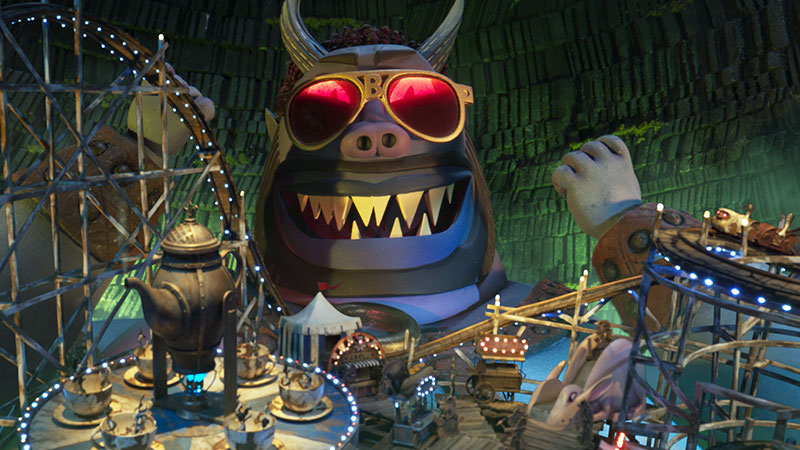Painting Practice combines Art Departments, production design and VFX to help filmmakers and TV producers achieve their vision and tell their story, allowing creativity to flourish.

His Dark Materials - Intention craft
When describing the work of Painting Practice studio, pre-visualisation is a good start – but only a start. Painting Practice helps filmmakers maintain accuracy and control over their productions. Their work allows productions to achieve their vision and tell their story, while allowing creativity to flourish along the way, and their passion is combining Art Departments, production design and visual effects.
The Creative Directors and Co-Founders of Painting Practice, Dan May and Joel Collins, have abundant experience in production and post, across visual effects, animation, VFX art direction, graphics, production design and many other specialities. Their company is the team largely responsible for the worlds and looks of the television series ‘His Dark Materials’ and ‘Black Mirror’.
Early in his career, Joel was a creature designer at Jim Henson’s Creature Shop, working on such films as Babe, Flintstones, Neverending Story and The Muppets at an industry transition period when techniques began changing from in-camera effects to VFX. He also contributed to the massive pitch to Disney to make The Hitchhiker’s Guide to the Galaxy. In 2018, he won a BAFTA Award for Special, Visual and Graphic Effects for Black Mirror.
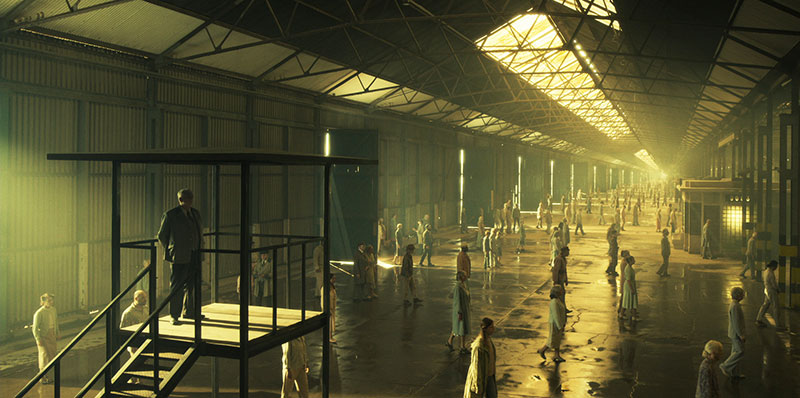
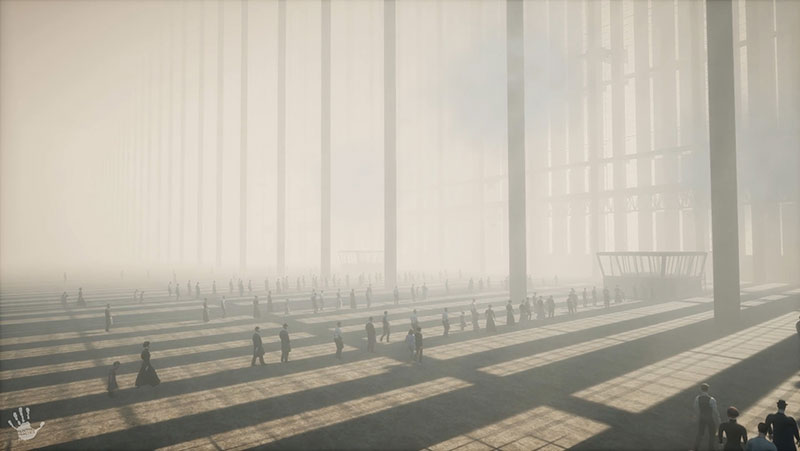
His Dark Materials - Suburbs of the Dead [top - final; below - Artvis]
Dan May’s roles have ranged from VFX artist, Art Director and VFX Art Director to Sequence Director, Production Director and Production Designer. His diverse project credits include Andy Serkis’ Jungle Book, Disney’s Beauty and the Beast, Nike’s World Cup commercial ‘The Last Game’ and the TV series Watership Down and Day of the Triffids.
Painting What?
Dan and Joel have been working together on the company that has become Painting Practice since 2007. The name of the company comes from a project Joel and Dan worked on very early in the company’s life that showed them the need for an extremely accurate point of reference when making films, TV shows, commercials or any project – precisely so that unexpected outcomes don’t break productions or budgets. For that particular project, Dan had set out an exact plan for building up a 3D environment to match the producers’ concept art.
He left the plans with the VFX team, but when he returned to review the result, he found a confused mess. An error had been made in carrying out the plan, which had then propagated across the environment. Promising Dan that the team would go back to the studio and get it right, the supervisor said, “Don’t worry – this is just painting practice. We’ll fix it.” Thus, the need for accuracy was clear, in spite of, because of human error – allow for changes, expect error.
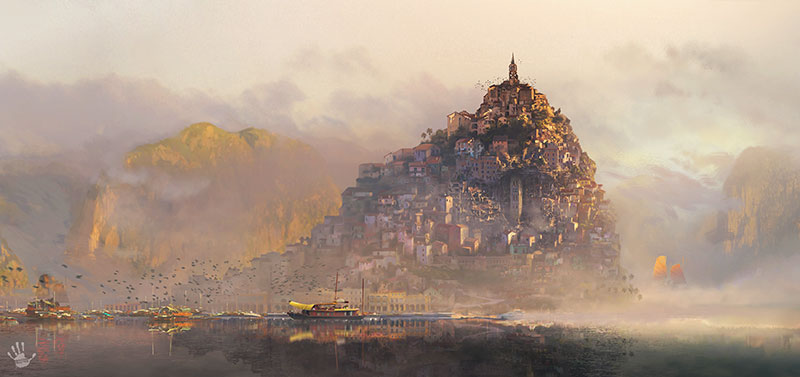
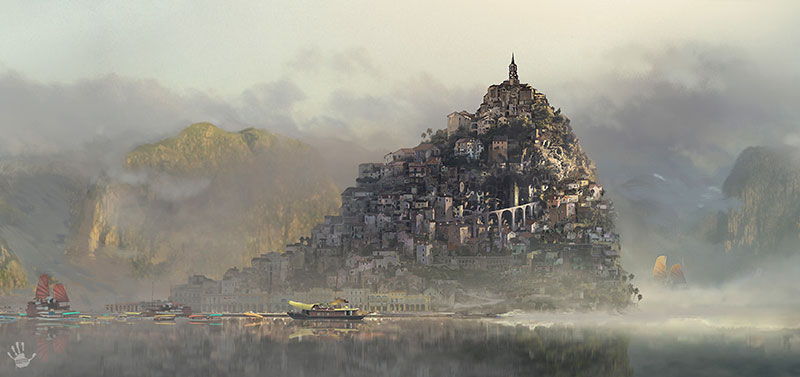
His Dark Materials - Cittàgazze
Closing the Gap
Painting Practice’s work might best be described as optimising concept art, previs and post vis pipelines for filmmaking. Joel remarked that production and post teams these days nearly always want to start working very early on a show. But currently, being allowed to do that still depends on what skills a team is offering. “For instance, Design Departments always get to start early but VFX Depts generally don’t,” he said. “VFX artists are expensive, and can’t really start producing something tangible until post production.
“It’s very hard for them to change that position in the workflow. Though they really want to be there during pre-production, producers and creators find it hard to understand why, and meanwhile designers aren’t necessarily interested in VFX. So – that creates a natural gap that Painting Practice is aiming to fill.
“The reason it’s worth pushing for a change in those processes is that if the VFX team can get in there early, pre-greenlight even, and bake into the show an understanding of the relationships between VFX, integration of motion graphics, the insights from previs and postvis – if all that is baked into the show, each element works much better.
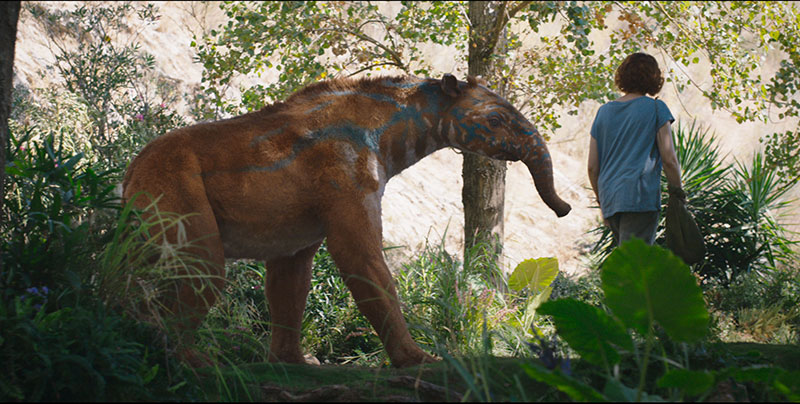
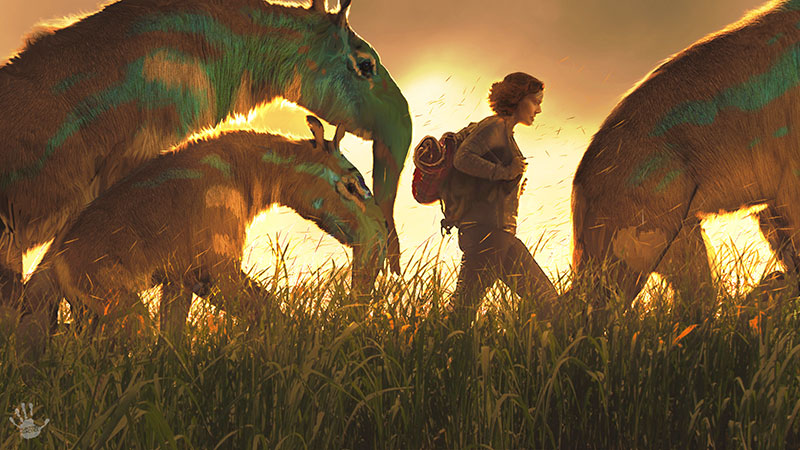
His Dark Materials - Mulefa world
“You still have to determine and prove you will be useful to many aspects of the show before you can expect to be paid for involvement during pre-production. Some VFX companies are trying to solve the gap by developing and creating their own shows, and getting them commissioned at broadcasters. They find it so hard to get into other studios’ shows early enough to do the work they know they are capable of.”
Seeing Is Believing
Black Mirror, a futuristic anthology, and His Dark Materials, a timeless multiverse, are essentially different but are similar in the fact that in both cases, the creators and producers came to Joel and Dan saying, “We have all of these ideas, but we don’t know how to make this show.” Visualisation was the key.
The team worked for five years on His Dark Materials, ending with Series 3. They created the visual concepts and entire world design; pre and postvis; virtual production and R&D, graphics, titles and VFX design. They were pivotal to creating the memorable visual features of the show, from Asriel’s Intention Craft, Cittagazze, the Mulefa world, Trollesund and Asriel’s World – to the Land of the Dead.
Equally important, the work of Joel as Series Production Designer and EP and the team guided and informed the VFX, which were completed at Framestore. At the same time, Dan May led the team through a new kind of pre-production world building as the Series VFX Art Director and Previs Supervisor. By developing a virtual studio app that runs on Unreal Engine, Dan was able to use the plans for the show’s large scale physical set extensions and set pieces and, with the directors, take them in new directions. His app, called Plan V, is now a core part of the studio’s R&D services and is described in more detail further on in this article.
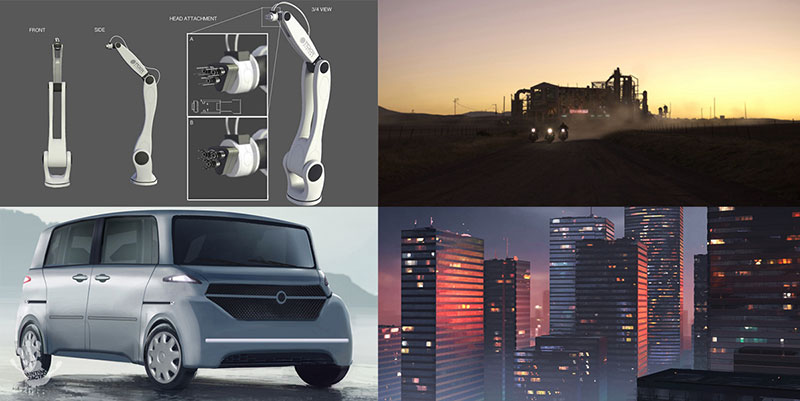
Black Mirror - San Junipero concepts.
A Fine Line
Black Mirror had not yet been a fully conceived show when the producers started working on it. Joel said, “It was a set of ideas that the creator Charlie Brooker had configured into a show. With Painting Practice, everyone got to work and created the first episodes and first two series. We continued to develop the project, even when Channel 4 unexpectedly decommissioned it and Netflix finally bought it.” From that point, Painting Practice and Charlie’s team made the series.
“Even the first two series walked a fine line in terms of popularity, and only on Series 3 did it become a hit,” said Joel. “I had started this process in 2011, and Series 3 was released in 2016. It took six years of talent and skills, certainly, but also commitment, energy and tenacity to pull all of those creative ideas into a coherent production.”
Painting Practice designed Black Mirror’s visual effects, motion graphics and titles, and also hired the design and VFX vendors, with enough scope between these teams to make decisions that would allow continuous expansion and growth. It was a formative process for Painting Practice as well as for the show’s production team.
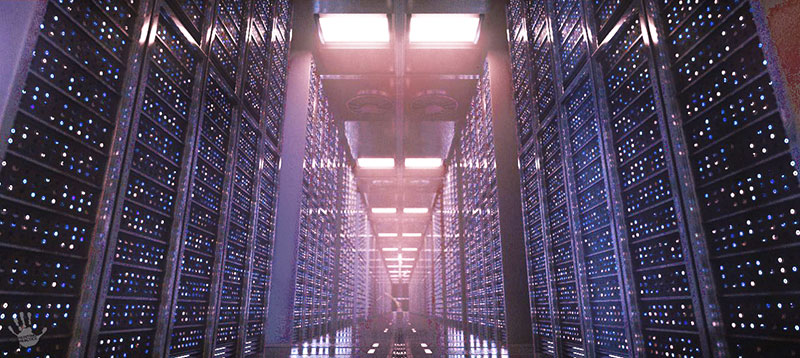
Black Mirror - Server concept
For example, when Dan hit a roadblock in getting them to understand the effect of one of his set designs of a night club, he built the entire 3D scene in a game engine, gave them VR headsets and played it out for them – and even then, only some of them understood what they were seeing. For another episode, viewers watch a character in a set surrounded by LED screens playing out graphics while the camera rolled, not exactly aiming yet for the integrated photoreal effect of virtual production, but the kernel was there.
A Journey – from Art Dept to VFX
As this fearless kind of effort demonstrates, the advantages of working with Painting Practice include commitment to storytelling and pride in delivery. Joel commented, “Most VFX artists are – or want to be – designers or directors or both. They can pick up a script and start figuring out how to visualise the story on the ground.”
Many of Painting Practice’s services are linked to the idea of pre-visualisation, but the team carries out an enormous, evolving range of services, some of which are unique to the company, while others are custom developments of recent techniques they have encountered, from virtual production to techvis to real-time CG set exploration.
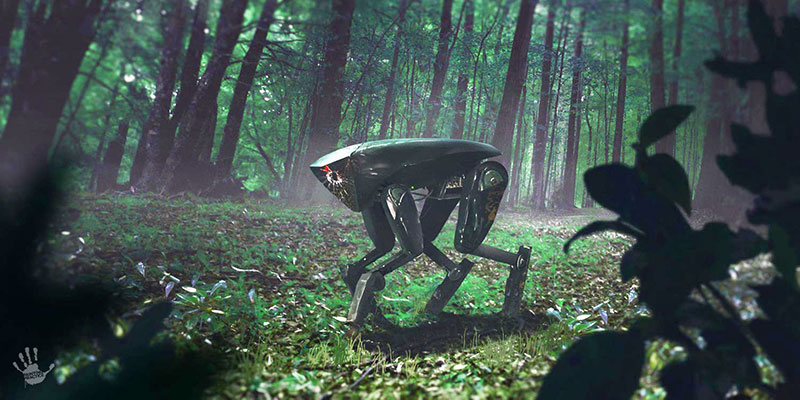
Black Mirror - Robodog
Always intent on bridging that gap between the production’s Art and VFX departments, the primary goal of all of these is telling a story visually in the most direct, integrated way. Projects start with visual development – concept design and keyframes, and Painting Practice’s immersive Artvis technique, into a shareable vision.
The Previs and Postvis teams make the vision more precise for planning within the Art and VFX Departments. Techvis is used to guide the production on how to physically capture the necessary shots on set. Postvis reveals set extensions, DMPs and CG builds, in the plates and in the cut, before VFX begins.
The above work often includes building accurate CG assets to plug into scenes at any of these stages, showing the characters, buildings, vehicles and so on, all in place. It could include virtual set scouting using real-time rendering with VR headsets.
Focussed on linking the VFX dept with what happens on set, Painting Practice has a VFX Design team. The CG elements the artists build in early pre-production – environments and creatures set extensions, matte paintings etc – serve as the universal reference or blue print for what the team needs in post.
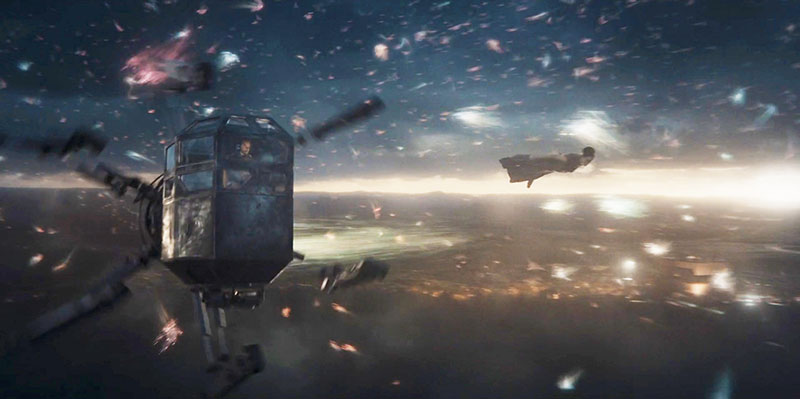
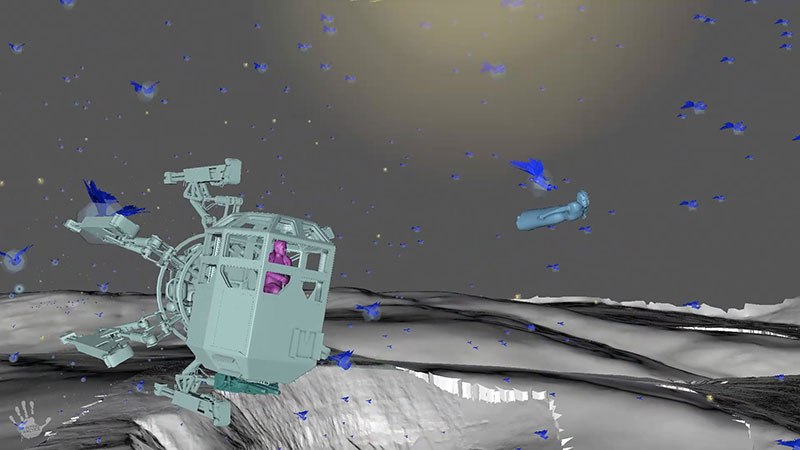
His Dark Materials - Intention craft battle
Painting Practice’s Graphic Design team creates and produces graphic elements and motion graphics. More productions want to include these kinds of features now as part of the visual story that supports the script. Digital graphic elements are by now an essential part of our environment, and filmmakers want to be able to customise and have complete control over them in shots.
Safe Space
This long list of services includes some highlights that deserve more explanation. ARTVIS, for instance, is an immersive, moving form of concept art using Unreal assets, characters and cameras, usually viewed with a VR headset. It serves as an exploratory ‘safe space’ where people who normally think verbally can learn to work more visually, walk around in the environment, converse and make decisions.
An example of using Artvis was the Mulefa world in His Dark Materials. In that case, it was a PRE pre-vis stage to inspire ideas about a place that no one ever seen or visualised before. The production could use Artvis to consider mood, relative scales, while working directly from the script.
About GRAPHIC DESIGN, Creative Director Erica McEwan believes that nearly any show can benefit from motion graphics. The team produces in-camera graphic features, graphic elements integrated in post as well graphics-only sequences such as titles. “Whether they play a character-like role of their own or blend into the environment, the key in either case is to promote the story and avoid distracting the viewer. But it takes clever design. Our approach is to integrate the graphics from the start,” Erica said.
In-Camera Graphics
As part of the Art Dept, Erica also knows what the production needs on set. This work is an example of what makes the breadth of Painting Practice’s approach to projects unusual. Their direct contact with the VFX Dept for almost every detail, combines with their work on set with the Production Designer and Director before the design process is complete.
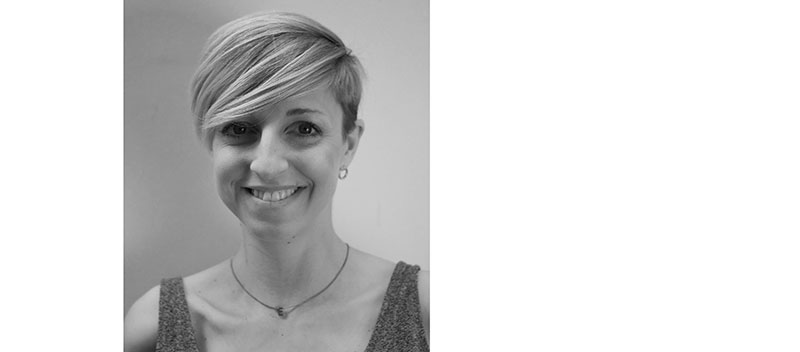
Creative Director/Designer Erica McEwan
Erica said, “Having access to both groups means we can finalise important factors on set, knowing that some of those decisions will reach VFX directly. In other words, you can involve that post side of a production as well, even while you are still on the set, resulting in a linked up space for the graphics to develop.
“The 3D team will be there with us, building their spaceship or other assets – and harmony results. Black Mirror was a turning point in our use of motion graphics. Because we had our graphics team right on hand, we could do much of the huge amount of graphics for that show in-camera. It saved a lot of money, which was important because the series actually had a very small budget. If the producers had gone ahead and outsourced all of that work to do in post, it would have cost far more and also lost the advantage of actor interaction that in-camera graphics achieve.”
Nevertheless, playing out motion graphics on set is a complex operation. It needs a lot of art direction, technicians and staging, plus computers to run the playback software on set. Painting Practice creatively manages all of this, as well as the design. By the end, whatever needs doing in post is minimised, and the teams are already involved.
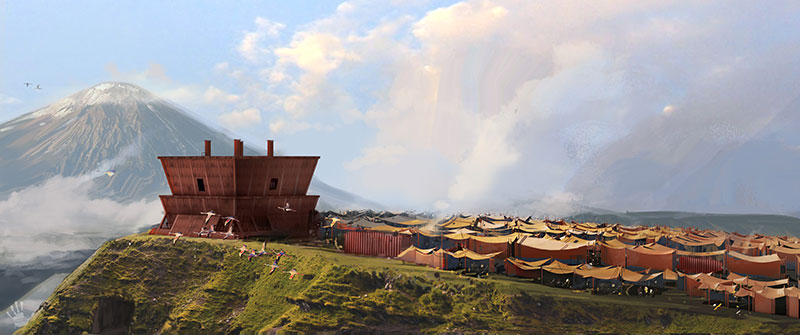
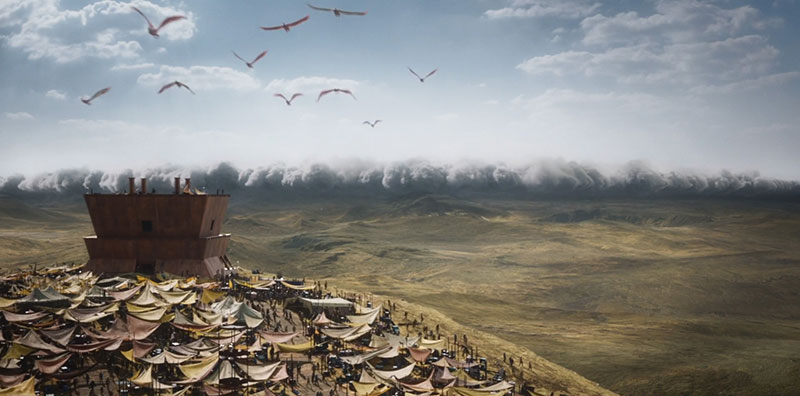
His Dark Materials - Asriel's encampment
Plan V
There is one more set of services at Painting Practice devoted to R&D. Most recently, that work has focussed on an Unreal Engine plug-in that Dan May has developed called Plan V, and to previs for productions pursuing Virtual Production.
Plan V works as a virtual studio for live prvis rendering. It allows filmmakers to explore 3D environments, 3D with assets and cameras. Multiple users can plan shots on screen in real time, alongside traditional previs and techvis processes. “The software functions in the UE Editor mode, and also allows you to package environments and sequences, as if it were a standalone game engine,” Dan said. “This function is what runs off the Unreal platform in order to operate.”
Plan V really came into its own for ‘His Dark Materials’, for instance, when one of the directors Jamie Childs was trying to visualise how he would shoot the bear fight from Series 1, although the production didn’t even have a set at that point.
Jamie said, “We had a set to explore that physically didn't exist. What I found the most useful about Plan V was that it gave me a virtual camera and assets I could use to get into that scene and shoot the shots I wanted. I could walk around and look at the bear fight and see it. That was important because I wanted the sequence to feel like a real fight being recorded, not a CG fight.
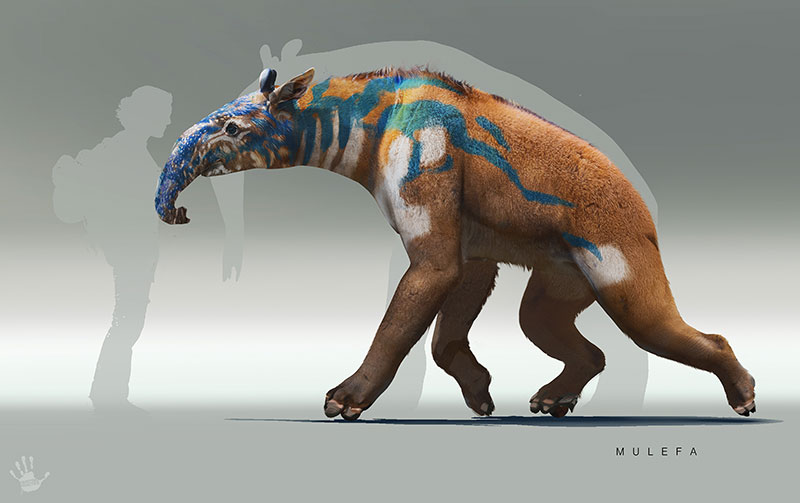
His Dark Materials - Mulefa World creature
“I could move around that room physically, get the camera into the position I wanted and see on my camera monitor screen what it was going to look like. I could record those shots and cut them together – that was really freeing for a director.” Dan May continues to develop Plan V, which now includes PLAN V TOOLS 2.0 and PLAN V POSE.
Pre-vis for Virtual Production
Tools and methods are changing fast, but can take a while to find their feet. Joel notes that virtual production, for instance, is proving itself and gaining momentum, but is still inconsistent and relies on expensive equipment. Painting Practice is finding that few creative experts fully understand it yet – how to use it to good effect, how to translate their ideas to the technical equipment or how to integrate it into the rest of the production.
Joel commented, “Virtual production is still dependent on separate individuals acting as the creative force behind the production. The work isn’t developed enough to flow under its own steam – it will take a little while before creative is the determining factor in the success of a virtual production, not the budget.
“I expect that the next two years or so will be devoted to making VP cost effective. For instance, being fully prepared for production as soon as your screens, talent and crew arrive can make a huge difference to costs.
“Painting Practice works at this virtual pre-production stage, not at the volume stage. We can organise your team to shoot efficiently, making sure they know the purpose of every step you’ll take and every piece of equipment. Many of our tools are geared toward that kind of planning. We can give you something accurate and purposeful to plug into that virtual space, and creatively manage your CG elements.”
The Innovators
Similar to the Plan V adaptation of Unreal Engine, Dan May is continuously scoping and developing new tools to use in Painting Practice’s work. He likes to find the newest processes and tools and then use their potential to innovate further.

Creative Director/Co-founder Dan May
“Sometimes we’re presented with a creative challenge that could be done using the usual techniques, but for VFX artists like ours and like me, the chance to try some new tech or software tool is impossible to resist,” he said. “It's part of what keeps the job interesting, although it can also be quite exhausting keeping up with technology. We often have to strike a balance between learning on the job versus the budget and time frame available to get it done.”
Either way, any down time or quiet period our artists have between projects is invested in learning new skills or trying out new workflows. The projects themselves present great opportunities, which we can then put to the test.”
ARTVIS grew up in that way. On large scale world building projects, which are fast becoming Painting Practice's bread and butter, the ability to visualise the set designs and ideas, without committing resources to the often rigid plans associated with previs, is valuable. Artivs is an earlier, more creative phase before you have locked any sets or even discussed any blocking ideas.
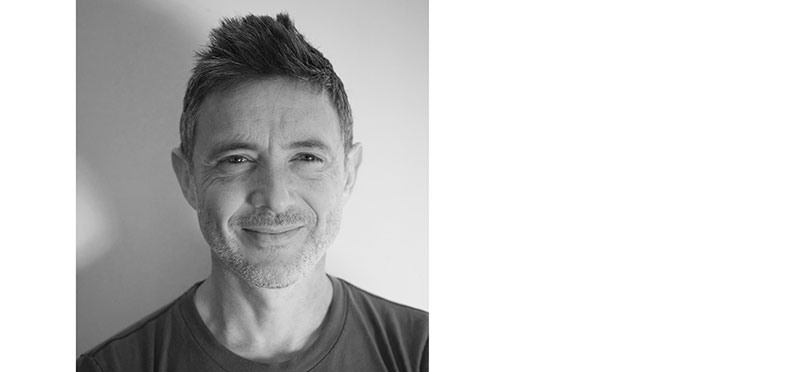
Creative Director/Co-founder Joel Collins
Dan said, “The team and I can offer up shot ideas in the environments to help sell them to everyone, but also flag potential problems with sets/locations before you go too far down any roads. It’s basically moving concept art, which has only really been possible due to the massive leaps in software innovation and also to artists’ ability to rapidly ideate and produce assets.
“To be honest, all the software companies and now AI models like Midjourney and stable diffusion are pushing the speed of design and VFX processes so fast it's pretty hard to keep up. I like to think as a company we have always been pioneering in our approach to design led VFX. But now more than ever companies and artists will have to spend a good proportion of their time up-skilling and adapting. I believe the next few years will be the most disruptive and exciting time we have had since VFX really started.” paintingpractice.com
Words: Adriene Hurst, Editor

















